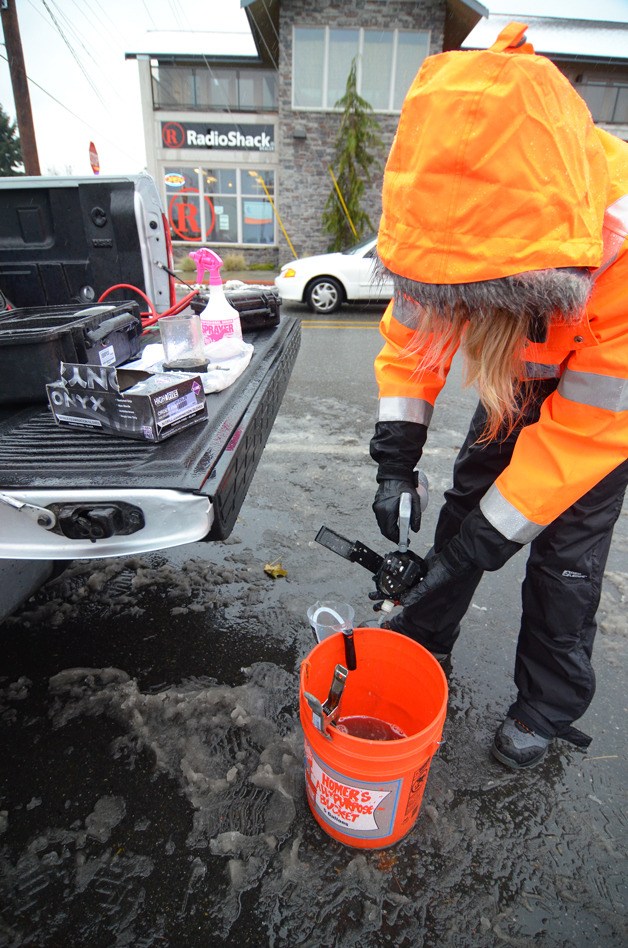Freeland’s water supply appears to be under little immediate threat from a 2005 fuel spill on Main Street, state regulators have announced.
Four additional groundwater monitoring wells were dug on select properties between Main Street and Highway 525 in December, and preliminary test results of water samples revealed contamination from petroleum compounds in only one of the four — the well located closest to the spill site. The results indicate the underground “plume” is not moving quickly toward large wells on Scenic Avenue that supply most of Freeland’s water.
“It’s good news,” said Diane Escobedo, a project lead with the state Department of Ecology. “To see that we have clean wells, if we step out from the gas station a bit, is really good news.”
This was what Freeland Water and Sewer District officials had been hoping to hear since the samples were collected last month. The possibility that the plume was moving through the aquifer toward the district’s primary wells across Highway 525 was unsettling, and several officials expressed relief following the announcement.
“It’s very good news,” Commissioner Lou Malzone said. “It was a scary thing.”
The district’s wells supply water to about 90 commercial businesses and about 400 residences in the area.
Escobedo did warn, however, that these are preliminary results and the data must be analyzed in greater detail. The additional information should help determine just how far and fast the contamination is moving, she said.
In 2005, Marty Winn, the owner of Whidbey Marine and Auto Supply on Main Street — now closed — reported a gasoline leak from an underground tank. Up to 7,000 gallons was estimated to have spilled.
The store owner has worked with Ecology, Department of Health, and Island County since 2005 through Ecology’s Voluntary Cleanup Program to investigate the pollution in order to perform the required cleanup.
Interim cleanup work from 2006 to 2012 removed or dissipated some of the fuel, and all tanks at the former service station were removed when the facility closed in 2011, according to Department of Ecology officials.
The four new wells were tested along with nine previously drilled wells, all of which were dug to depths of 60 or 100 feet, according to agency documents. A total of seven of the 13 were found to have petroleum contamination above state cleanup standards.
The older wells were all located in the nearby vicinity of the old gas station, however, and the new wells — all drilled to a depth of 100 feet — were spread farther out with the hopes they would provide a broader picture of both the progress and direction of the plume.
While contamination was found in the closest of the new wells, which is located directly across Main Street from the former store, the other three were all 100 or more yards away and got clean bills of health.
Despite the positive results, this isn’t the end of the clean up or monitoring effort, Escobedo said. A meeting with the former gas station’s owner, his consulting firm Farallon Consulting and state regulators will be held in the immediate future to determine what additional remediation will be required.
“We’re not done,” Escobedo said. “We still have issues we need to address. This remains a contaminated site.”
Information on the cleanup, including the newly available data from the four monitoring wells, is available online at https://fortress.wa.gov/ecy/gsp/Sitepage.aspx?csid=5610



